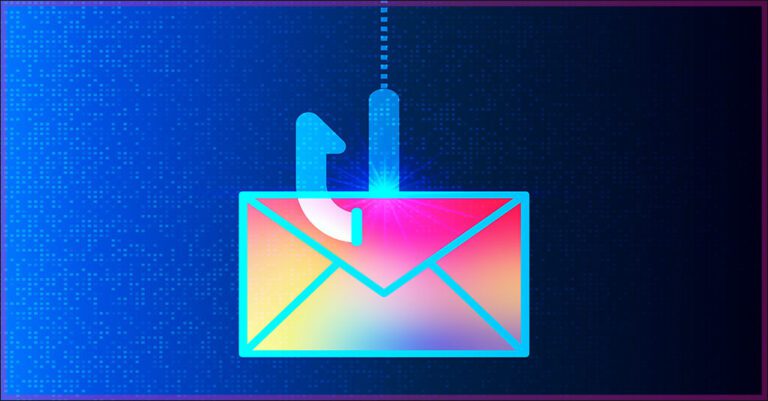How to Mitigate Phishing Attacks: Techniques and Strategies

Phishing is the most prominent threat for organizations of all sizes and across all sectors today. Some of the most damaging cyberattacks, like business email compromise (BEC), ransomware and account takeover, use phishing as a precursor. In fact, more than 90% of cyberattacks start with a phishing email. Threat actors leverage phishing attacks to gain access to protected systems, networks and data, which can lead to widespread damage for the victim organizations. That’s why learning about phishing mitigation is essential to stop cybercriminals in their tracks. Read on to learn about some of the ways to mitigate phishing attacks.

Explore how AI technology helps businesses mount a strong defense against phishing GET INFOGRAPHIC>>
What is phishing mitigation?
Phishing mitigation is a set of techniques and procedures to improve an organization’s resilience against phishing attacks. These techniques help organizations stop cyberattacks from breaching an organization’s defenses.
Phishing Mitigation Techniques
Phishing mitigation is a set of techniques and procedures to improve an organization’s resilience against phishing attacks. These techniques help organizations stop cyberattacks from breaching an organization’s defenses.
Be Vigilant of Phishing Red Flags
Here are some common phishing red flags that organizations and employees should look out for to prevent security breaches.
- Generic subject or message: Most phishing campaigns are designed to trap a large number of people, so the subject lines are primarily generic. While interacting with emails, users should always check whether the message contains a generic subject and greeting. If the generic email is from an unknown source, there is a high probability that it is a phishing email.
- Poor spelling or grammar: Users should have their guard up if they find grammatical errors and spelling mistakes in an email. Many observers believe scammers intentionally use typos to weed out recipients too smart to fall for the phish. Their goal is to trap gullible and innocent victims. Sometimes, spelling mistakes are also used to bypass email security filters.
- Unknown senders: Almost every phishing attempt is from an unknown sender, so users should be cautious when interacting with an email from someone they don’t know. An email from an unknown sender is often a spam message, and users should always report it.
- Suspicious links or attachments: An attachment or a link is often the gateway for malicious content. Users should always be very careful when interacting with a link or an attachment, even if it comes from a trustworthy source. Hover over the hyperlink to ensure that the destination is correct. As a rule, never download any file from an unknown sender.
- Urgent language: Scammers do not want their targets to think twice and want them to act in haste. Never respond to an email if it asks for an urgent response, especially if it asks for confidential information or a financial transaction. Cybercriminals use spoofed email addresses of executives in an organization to instill a sense of urgency. If it sounds fishy, it is advisable to cross-check with the sender directly in order to avoid a fiasco.
While organizations can weed out standard phishing emails by keeping an eye out for these aberrations, many phishing emails do not feature these obvious red flags. Phishers often use advanced tools and sophisticated techniques in their phishing emails that a typical user fails to identify.

Learn how Datto EDR satisfies cyber insurance requirements for endpoint protection & EDR. DOWNLOAD REPORT>>
Here are some precautions organizations can take to protect their IT environment from the most advanced phishing attempts.
Conduct phishing awareness training
Along with being a prerequisite for compliance adherence in many sectors, phishing awareness training is a vital tool for organizations to keep phishing attacks at bay. With regular phishing awareness training, organizations can educate employees on how to spot and report suspected phishing attempts and protect themselves and their employers from cyberattacks.
Utilize phishing simulation
Even after phishing awareness training, there is a chance that employees could fall for a phishing attempt. Phishing simulations are the best way to evaluate the likelihood of an employee falling for a phishing attack. The simulations help employees detect social engineering tricks, which is a significant component of phishing attacks.
Emphasize password security
While passwords remain the standard way to log in to corporate apps and most online accounts, they are often exploited, misused and abused by cybercriminals. Hackers leaked over 2 billion credentials in 2022, making password security paramount for organizations. Here are some recommendations for enhanced password security:
- Create strong and unique passwords: A strong password can go a long way toward securing a user’s credentials. Unfortunately, most people still use their name, birthdate or other obvious passwords that threat actors can crack easily. However, combining numeric, alphabetic and special characters in a password makes it a challenge for hackers. It is also imperative to use different passwords for different accounts in order to secure other accounts if one account is compromised.
- Rotate passwords: A user often has no idea about their compromised account. It is, therefore, important to change passwords frequently to prevent attackers from gaining easy access to an account.
- Use a password manager: Remembering passwords for all online accounts can be challenging. Password managers help users keep track of their login credentials, so users don’t need to remember multiple complex passwords. This also reduces users’ temptation to use simple, easy-to-remember passwords.
- Utilize multifactor Authentication (MFA): Along with passwords, MFA provides an extra layer of security by adding another authentication process. Implementing MFA strengthens the security of online accounts.

Learn how managed SOC gives you big security expertise on call 24/7without the big price tag. LEARN MORE>>
Protect sensitive information
One of the main motives of threat actors in phishing campaigns is to obtain sensitive information, be it user credentials or other crucial data. Taking steps to prevent scammers from accessing critical data can prevent phishing attacks. Users should never disclose their personal or financial information to any unknown source. Also, while accessing websites, users should never disclose any information unless they are absolutely sure of the authenticity of the website.
Install patches and updates
Although regular updates can sometimes frustrate users, they are an indispensable aspect of cybersecurity. Users should never ignore updates since they help patch any system loopholes. Failing to update software regularly can put an organization’s security at risk due to known vulnerabilities.
Add layers to your security
With cyberattacks growing in frequency and sophistication, a layered cybersecurity approach is the need of the hour. Here are some solutions that can add layers to an organization’s phishing defense.
- Firewalls: A combination of desktop and network firewalls drastically reduces the odds of hackers and phishers infiltrating an organization’s cyberdefenses.
- Spam filters: Spam filters scan all incoming emails and detect any suspicious content. They identify common words, phrases or patterns that phishers use and alert the users.
- Anti-phishing add-ons: Most browsers these days have in-built anti-phishing add-ons that are free to use. These add-ons spot phishing websites and malicious content and alert users before they can interact with them.
- Pop-up blockers: Pop-ups are a new tactic employed by hackers to launch their phishing campaigns. Many popular browsers allow users to block pop-ups.
Report and communicate phishing attempts
A single phishing campaign often targets a large number of users. Phishing emails tend to “hide” among benign emails, and identifying and reporting a phishing email can save others from falling into cybercriminals’ traps.
Deploy anti-phishing software
Anti-phishing software is an antidote for phishing emails that shields an organization’s employees from suspicious emails by blocking malicious links, stopping weaponized attachments and identifying signs of fraud and impersonation. It is paramount for organizations to implement anti-phishing software for a comprehensive defense against phishing attacks.

Find out about five of today’s biggest dark web threats to businesses in this infographic. DOWNLOAD IT>>
Mitigate Phishing Attacks with Graphus and BullPhish ID
To defend against ever-growing phishing risks, IT teams need to address it from different angles. Graphus and BullPhish ID help create multiple layers of phishing defense for your users.
Graphus, an AI-based, anti-phishing email security solution, recognizes and stops even the most sophisticated social engineering attacks. It blocks the vast majority of phishing emails from reaching end users, so they never have to interact with malicious messages, reducing the risk of mistakes.
BullPhish ID, a security awareness training and phishing simulation solution, educates and protects every employee. It trains employees to spot phishing attempts that may slip through email security and to follow sound cybersecurity practices.
Book a demo of our anti-phishing solutions today to drastically reduce phishing risks for your organization

Read case studies of MSPs and businesses that have conquered challenges using Kaseya’s Security Suite. SEE CASE STUDIES>>